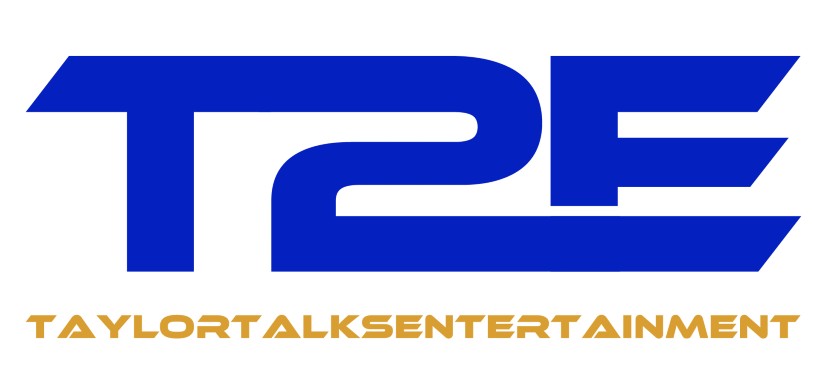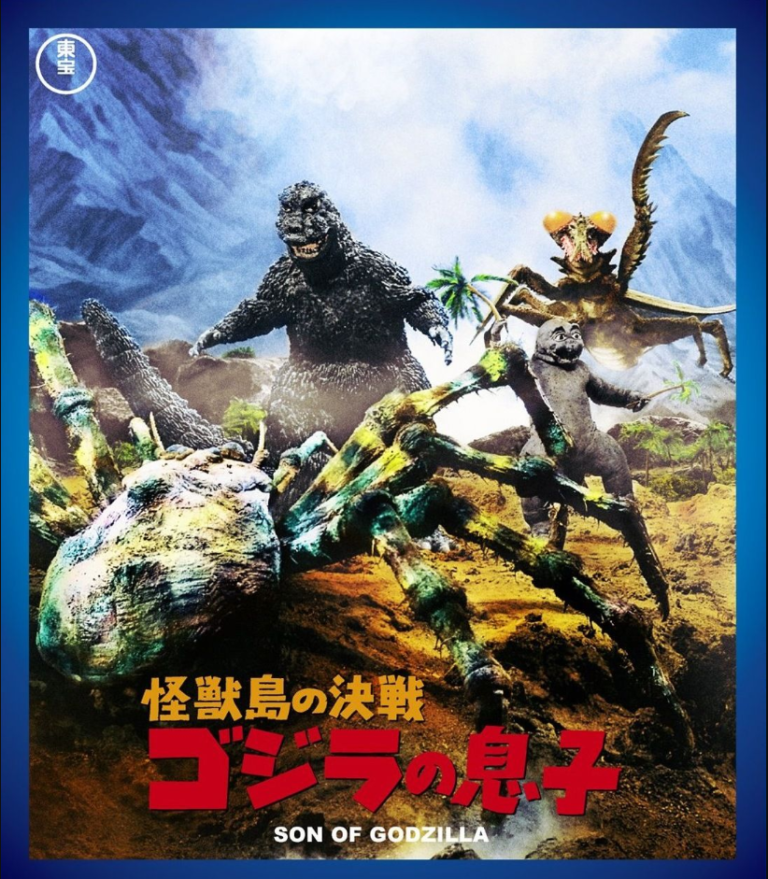So, with the Armored Core VI review completed, we can get back to the Godzilla marathon. We’re nearly at the end of our planned marathon, but we have two films left to cover before we hit the originally intended finale of the series, Destroy All Monsters. Today’s pitstop is the one and only Son of Godzilla! This film also marks an interesting experiment within the lifespan of the series. Despite future films revisiting the concept, this film does have some aspects that set it apart. But let us wait no longer before diving into Son of Godzilla!

Introduction & Pre-Production
Following the release of the previous film Ebirah: Horror of the Deep, Toho had a full slate of films for release in 1967. Not only did they mend their relationship and contract with Rankin Bass to produce the Honda directed King Kong Escapes, but they also greenlit the production of a new Godzilla film. Given that Honda and Ifukube were busy working on the previously mentioned Kong film, Toho once again tapped Jun Fukuda as director, Sadamasa Arikawa for special effects, and Masaru Sato for music composition. At the time this was viewed by many as a lesser production team as they lacked the same pedigree and experience across the franchise as the likes of Honda, Tsuburaya and Ifukube.
However, the fact that the same team that had worked on Ebirah: Horror of the Deep returned to work on this film ensured that the production would remain consistent. But, a major change in the production team did occur, which was the addition of a co-writer to join Shinichi Sekizawa. This was Kazue Shiba, the first female writer for the franchise. Initial story drafts from her were tentatively titled Two Godzilla’s: Japan S.O.S. Her initial scripts did not feature additional monsters in the form of Kumonga and Kamacuras, they only featured Godzilla and Minilla.
Filming took place on location in Guam, as well as Gotemba, Lake Yamanaka, and Oshima, Japan. The film was the second in a row to take place on a remote Pacific island. Toho wanted the movie to appeal to the “dating crowd” consisting primarily of young couples as this was a popular genre at the time. Toho seemed to think that a film starring a baby monster would appeal to this crowd. So, when given the choice of making Godzilla a baby or giving him a baby, the option seemed clear. Fukuda supported the idea of Godzilla having a son as he wanted to do something different whilst Sekizawa had grown tired of writing the series and was open to new approaches. So, when the producer Tomoyuki Tanaka proposed the idea of giving Godzilla a son, Sekizawa and Fukuda agreed. Son of Godzilla starred Akihiko Hirata, Akira Kubo, Tadao Takashima, and Bibari Maeda.
The film was released theatrically in Japan through Toho on December 16, 1967 and released theatrically in the United Kingdom in August 1969 alongside Ebirah: Horror of the Deep. The film was never released theatrically in the united states but was released directly to television by American International Pictures. All versions were released under the name Son of Godzilla.
Synopsis & Writing
On a remote island in the Pacific a group of researchers have set up a base to create a device that can change the weather. Problem is that the island is home to some gigantic monsters such as a clan of giant preying mantises known as Kamacuras (or Gimanits depending on your dub) as well as the giant territorial spider Kumonga (also known as Spiga depending on your dub). That is not all though as a massive egg also exists on the island. Upon hatching a baby Godzilla appears, which soon brings Godzilla to the island.

Yeah, the story is delightfully weird and set up for monster fights. But Fukuda went on record saying that the driving force of the narrative was the bonds of family and the father-son dynamic between Godzilla and his son Minilla. And if I’m being honest, the humans feel like an afterthought in this story, just there to research and create the weather device in the climax. In fact, the human plotlines have about as much emotional depth as a puddle.

The true heart of this film is Godzilla and Minilla and their interactions. Thankfully, despite having no dialogue the pair are extremely well characterized through their actions and serve as the emotional center of the film. The tone and storyline are something Honda would never have given us, but I enjoyed this story for what it was trying to be. The ending is ironically very heartwarming despite the frigid conditions present in the climax of this film. Giving the once classic symbol of the horror of atomic annihilation a young offspring to care for might be as far as you can get from the tone of the original. But it proved to be a nice experiment, a source of entertainment in the right context.

Presentation & Score
Son of Godzilla was noteworthy for Godzilla having the biggest Godzilla suit to date in the franchise. This was done intentionally to make Godzilla seem larger and more “paternal.” Seasoned Godzilla actor Haruo Nakajima only portrayed Godzilla in two scenes as the new suit was much too large for him. Three actors were actually hired to play Godzilla in this film, including series veteran Nakajima, along with newcomers Seji Onaka and Hiroshi Sekita. Minilla was portrayed by “Marchan the Dwarf” who was hired for his athletic ability as well as his ability to play act an infantile monster. Marchan had a lengthy history in acting, as well as in professional wrestling, and gymnastics.

Outside of Godzilla and Minilla, the other monsters such as Kumonga and Kamacuras were brought to life through puppeteer marionettes. The massive spider Kumonga required two to three puppeteers just to maneuver each leg. Arikawa, the special effects director. would have at least 20 puppeteers working in any given scene. The climax shows snow falling on the island, but it is actually Styrofoam and paraffin.

Son of Godzilla had quite a few scenes deleted, mostly related to Godzilla brand parenting. Tsuburaya served as effects supervisor and had final say on effects employed by his protégé, so many of these cuts likely came from him. The series had been assigning more humanistic traits to monsters in the franchise since Ghidorah the Three-Headed Monster and this film continues that trend. Son of Godzilla contains a lot of visual storytelling on the part of Godzilla and Minilla including plenty of physical comedy between the two monsters. Marchan’s physical acting serves to elevate this film and it would not have been the same without him.

As seen in the plot summary, this film had quite a few terminology changes for the English dub and lost two minutes of runtime, going from 86 to 84 minutes when looking at the two versions side by side. Across the film’s theatrical run it sold over three million tickets, and much like other films in the franchise, found a healthy life on home video. Son of Godzilla is also readily available in a number of collections such as the Criterion Collection and can also be found on streaming platforms like Amazon Prime and HBO Max.

Conclusion
Overall, Son of Godzilla is a highly experimental film that exists because Toho wanted a Godzilla film for 1967. Despite this it does some things very well. The story might be little more than set dressing and barely there, but the characters of Godzilla and Minilla mainly carry this film with their interactions. Putting aside the monster action, and the human plotlines, the bond between a father and son is what carries this film for me. There are certainly more interesting films in the franchise, but this film definitely makes a more emotional appeal and I appreciate it for that. I can recommend this film to series fans as well those who want a more family oriented atmosphere.
Patron Shout-Out
I want to take the time to thank each and every patron who helps to make our content possible. From the bottom of my heart I thank you:
Francesco
Lisa





